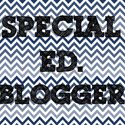Non-Fiction Texts
April 06, 2013
What is it about summarizing non-fiction text that sends everyone into a tail spin????
A group of my 5th grade students began reading a non-fiction text and had to summarize it as they went. I had them write one sentence that summed up each one or two paragraph sections. They spent to whole week grumbling about it. And the whole idea of having read it and then write about what they have read--is a new idea for them. Well-I don't know what they have done in class but this is the first book with me that they have done. But then all my students reading books write about what they read and publish they work. They have let to revolt--maybe it has something to do with the technology???
I created a couple of scaffolds for them to use. They were created with non-fiction text in mind, however the retelling and student conversation cards can be used with any text type. The student conversation cards are a way to get students to take control of the conversations about what they are reading. I use them to teach students how to have meaningful conversations about books without me having to lead the conversation. I'll have to give this one more time--they don't like talking about books on their own. But this too will come. What strategies or scaffolds do you use to help students with non-fiction text. I'd love to hear from you. Have a great weekend. Spring has sprung in Colorado.

A group of my 5th grade students began reading a non-fiction text and had to summarize it as they went. I had them write one sentence that summed up each one or two paragraph sections. They spent to whole week grumbling about it. And the whole idea of having read it and then write about what they have read--is a new idea for them. Well-I don't know what they have done in class but this is the first book with me that they have done. But then all my students reading books write about what they read and publish they work. They have let to revolt--maybe it has something to do with the technology???
I created a couple of scaffolds for them to use. They were created with non-fiction text in mind, however the retelling and student conversation cards can be used with any text type. The student conversation cards are a way to get students to take control of the conversations about what they are reading. I use them to teach students how to have meaningful conversations about books without me having to lead the conversation. I'll have to give this one more time--they don't like talking about books on their own. But this too will come. What strategies or scaffolds do you use to help students with non-fiction text. I'd love to hear from you. Have a great weekend. Spring has sprung in Colorado.

Labels:freebie,Guided Reading,writing
Subscribe to:
Post Comments
(Atom)

About Me
Welcome to my all thing special education blog. I empower busy elementary special education teachers to use best practice strategies to achieve a data and evidence driven classroom community by sharing easy to use, engaging, unique approaches to small group reading and math. Thanks for Hopping By.
Resource Library
Thank you! You have successfully subscribed to our newsletter.
Search This Blog
Labels
21st Century
Autism
Bloom's Taxonomy
DIBELS
ELL strategies
Formative Assessment
Fountas and Pinnell
Guided Reading
IEP
Just Words
Progress monitoring
RTI
Reading Comprehension
Wilson Reading System
apps
back to school
beginning readers
best practices
books to read
classroom
common core
comprehension
data
differentiation
fluency
freebie
intervention
lesson plan
math
parents
phonics
reading
small group
special education
teaching
technology
vocabulary
writing











0 comments:
Post a Comment